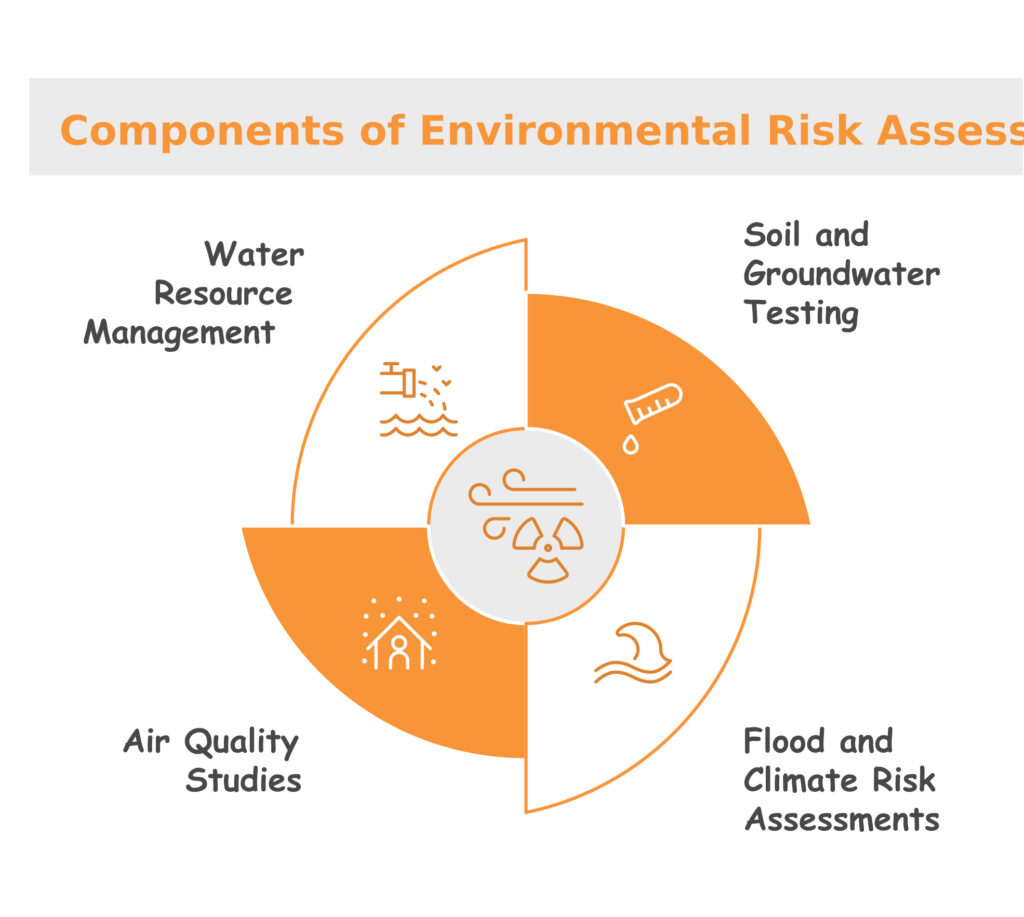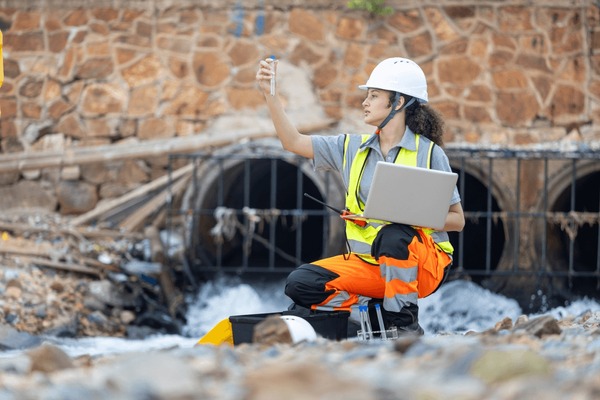Urbanisation can have a significant level of impact on the environment. Urban-specific challenges such as population growth and overcrowding can lead to pollution, climate change due to increased concentration of carbon dioxide, and so on.
To manage these issues, it is generally recommended that, in the early stages of urban development, environmental risk assessment be considered. This post will explore the concept of ERA and how it can aid urban planning.
What Is an Environmental Risk Assessment (ERA)?
Environmental Risk Assessment (ERA) can be referred to as a systematic approach that helps identify, evaluate, and mitigate hazards that occur with projects, activities, or any major changes in an environment.
It is a scientific process that evaluates the activities taking place and assesses the severity and likelihood of harm they can cause to the environment. The “activities” mentioned here will refer to urban projects in the context of urban development.
Its purpose is to see how rapid urban growth can impact environments, human health, as well as socio-economic factors. Therefore, when incorporated into the early stages of urban planning, it can lead to informed decision-making and implementation of green infrastructure management measures.
ERA vs. EIA
ERA can also be linked to Environmental Impact Assessments (EIA). However, you need to make sure not to mix these two concepts up. And to help you with that, let’s take a look at how ERA is different from EIA:
| Comparison Factors | Environmental Impact Assessment | Environmental Risk Assessment |
|---|---|---|
| Concept | Used to predict the environmental impact of a project | Used to evaluate the likelihood and severity of environmental hazards due to projects |
| Purpose | Evaluating the social, economic, and environmental impacts of a project | Evaluating the specific risks to the environment and health from projects |
| Focus | A broad assessment of the long-term effects of projects on the environment | A concentrated approach towards individual risks on health and the environment |
| Regulatory Significance | Required for Project Approval | Required for understanding the negative environmental impact in specific industries |
| Reach | Biodiversity, air and water quality, ecosystems, communities, etc. | Individual risks such as oil spills, radiation exposure, and so on. |
Table: ERA vs. EIA
Why Early-Stage Integration Matters
Environmental risk assessment can be a critical tool in evaluating how urban development activities can impact the environment. Therefore, the earlier this step is taken, the better the results would be. To explain how that would work, let’s look into:
Proactive Risk Mitigation
ERA is essential in the early stages of urban regional planning as it helps in the identification of potential dangers and an effective evaluation of their possible severity. This way, when undertaken at the start, the mitigation strategies can be devised before making any significant investment.
Therefore, it essentially identifies the risks and helps the planning of the mitigation steps proactively, helping build cities that are not only sustainable but also show long-term resilience.
This proactive approach is useful for protecting infrastructure and communities, helps in the conservation of natural resources, helps make informed decisions, and ensures public trust with an enhanced focus on environmental protection.
Improvements in Project Design
As the Environmental Risk Assessment is being incorporated early can lead to the identification of potential dangers and the identification of mitigation strategies at the onset, reducing expensive redesigns or delays.
This further leads to creating better-designed projects that are more capable of combating environmental risks and leads to the protection of infrastructure. And not only that, it can also safeguard the economy and public health.
Enhanced Stakeholder Engagement
When implemented early in the urban planning cycle, it can not only help identify the potential health and environmental challenges but it can also facilitate stakeholder engagement.
Furthermore, control and mitigation processes can work better with a continuous exchange of information. This is effectively facilitated with improved engagement with multiple stakeholders across different sectors.
Thus, it’s capable of building transparency and public confidence, which further leads to a smoother process of regulatory approvals.
Key Components of ERA in Urban Planning
Now that we have learned how useful ERA is in landscape and urban planning, let’s look into some of the most critical components of ERA that facilitate sustainable urban development. Some of these components are:

-
Soil and Groundwater Testing:
Testing the soil quality and the contamination levels of the groundwater helps prevent the pollution of ecosystems and helps make infrastructure more sustainable.
-
Flood and Climate Risk Assessments:
These assessments can facilitate a more proactive approach to the management and mitigation of the impacts of future disasters. And such a step can be critical to resilience planning and ultimately safeguarding lives and property.
-
Air Quality Studies:
Mass urban mobility can lead to increased carbon dioxide emissions, further leading to air pollution. In this context, air quality studies can provide real-time insights into the changing condition of the air quality. Further enabling climate change policies, sustainable development goals, and fostering public awareness.
-
Water Resource Management:
This can help by ensuring that there’s a reliable supply of clean water and the prevention of resource depletion by overconsumption. With rapid urbanisation, the wastage and overconsumption of water can be common issues.
Therefore, water resource management can help by increasing water security, preserving ecosystems, and improving conditions of public health and sanitation.
Process of Integrating ERA into Planning
With all that said, how exactly can ERA be integrated into urban planning? Several steps can be taken to ensure a seamless and beneficial integration:
Baseline Environmental Studies
Sustainable urban development depends on an effective project design that can meet the environmental regulation needs. And that is exactly where baseline environmental studies can help. These studies can support urban design planning by providing real-time and reliable data.
These studies are effective not only because they establish an environment’s existing conditions, but they also essentially create a picture of the environment with marked areas for the potential for damage due to urban development.
Basically, the studies help by collecting data before design work starts, making way for a sustainable and resilient urban design.
Scenario Modelling
Scenario modelling is a financial planning process, which various outcomes are prepared based on anticipation and calculated assumptions. Now, how does this integrate environmental risk assessment with urban planning?
ERA provides the data, and scenario modelling proceeds to predict outcomes for various development plans, and the potential financial setbacks in the case of environmental challenges are anticipated to create an airtight design.
Adaptive Planning
Adaptive planning helps incorporate data derived from ERA feedback into creating a continuous and flexible planning process. With this zoning, infrastructure, and design choices are made more adaptable.
This adaptability then further leads to resilience in the urban development plans, preparing for all possible scenarios, including environmental and health-related harm.
Summing Up
ERA can be integrated with urban planning to ensure that sustainability is ensured in the planning processes. However, if this integration is done in the early stages, urban development can take place with not only sustainability, but long-term resilience to safeguard the environment and public health.
Urban Planning? Incorporate ERA into it for Enhanced Sustainability
Planning to create an airtight and long-term sustainable urban design? A perfect choice in this matter can be environmental risk analysis. Visit us, and our team of experts will help you find the ideal integration between ERA and your urban development plans. Use it and create your perfect urban design that safeguards the environment and protects the residents.





